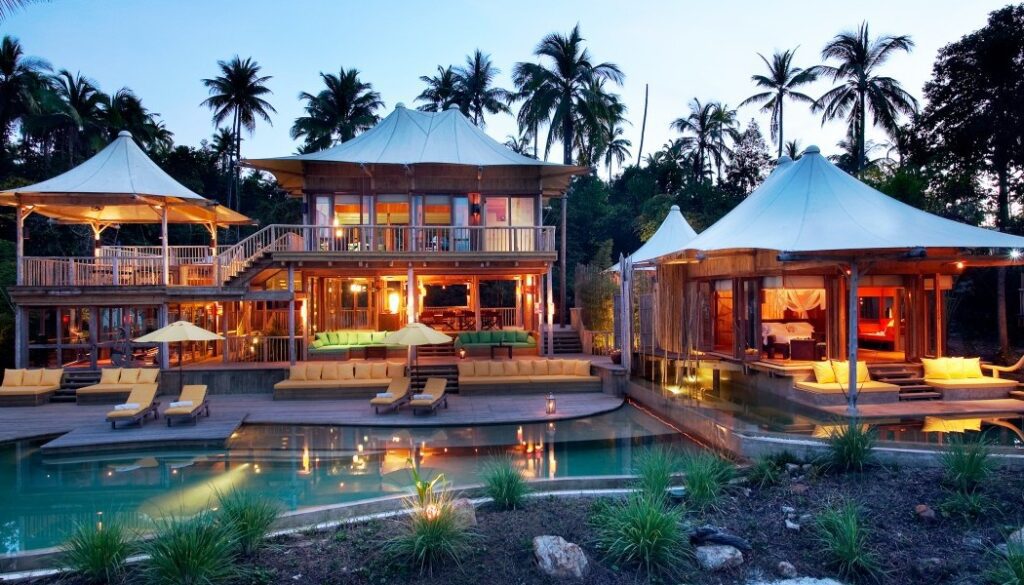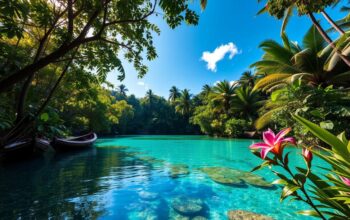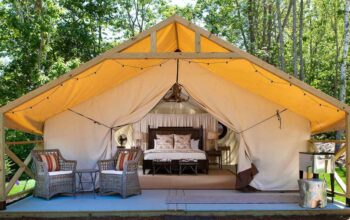In a world increasingly conscious of its environmental footprint and a yearning for authentic, impactful experiences, the concept of eco-luxury resorts has transcended niche status to become a burgeoning global trend. It’s no longer enough for a resort to offer opulence; today’s discerning traveler seeks an experience that seamlessly blends high-end comfort with genuine environmental stewardship and community engagement. This in-depth exploration will delve into the driving forces behind the current boom in eco-luxury resorts, dissecting their core principles, the tangible benefits they offer both guests and the planet, and how this sophisticated approach to hospitality is reshaping the future of high-end travel. Prepare to discover how indulgence and responsibility can not only coexist but thrive together.
The Intersection of Indulgence and Integrity
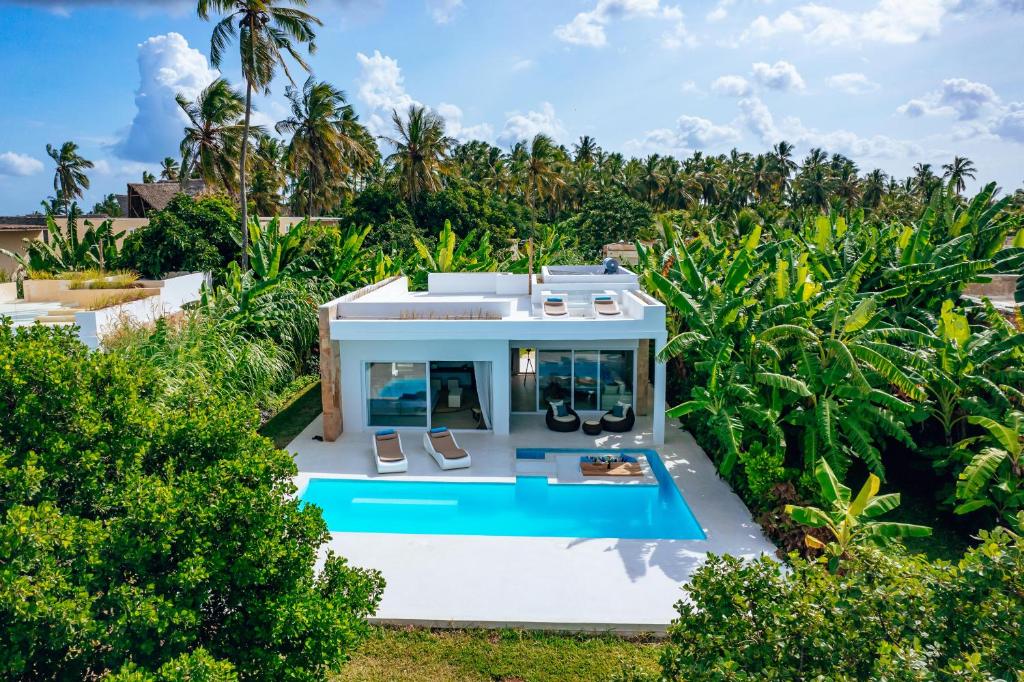
For a long time, the terms “luxury” and “eco-friendly” seemed at odds within the hospitality industry. Luxury often implied excess, while eco-consciousness was sometimes associated with rustic simplicity. However, a significant paradigm shift has occurred. Modern affluence is increasingly defined not by ostentation, but by values – authenticity, sustainability, well-being, and a connection to nature. This evolving consumer mindset has created fertile ground for the growth of eco-luxury resorts, which successfully bridge the gap between pampering and purpose.
These resorts are pioneering a new form of upscale hospitality, where exquisite design, unparalleled service, and gourmet dining are harmoniously integrated with sustainable practices, local empowerment, and conservation efforts. It’s about providing a guilt-free luxury, where guests can relax and rejuvenate knowing their stay contributes positively to the environment and the community. This isn’t just about meeting a standard; it’s about setting a new one, demonstrating that economic success and ecological responsibility can be mutually reinforcing.
The Pillars of Eco-Luxury Resort Development
The success of an eco-luxury resort lies in its unwavering commitment to a multi-faceted approach to sustainability, woven into the very fabric of its operations and philosophy.
A. Sustainable Design and Architecture:
Eco-luxury resorts are built with a minimal environmental footprint in mind. This involves using locally sourced, renewable, or recycled materials that blend seamlessly with the natural landscape. Architecture often incorporates passive design principles to maximize natural light and ventilation, reducing the need for artificial heating and cooling. Examples include using bamboo, reclaimed wood, and natural stone, and designing structures that minimize excavation and disruption to existing ecosystems. Biophilic design, which integrates natural elements and processes into the built environment, is also a key feature, promoting guest well-being and a connection to nature. Beyond aesthetics, the structural integrity and longevity of these buildings are considered, reducing the need for frequent repairs or rebuilds, which also minimizes waste.
B. Resource Efficiency and Conservation:
These resorts implement advanced systems for energy and water conservation. This includes solar panels for electricity, rainwater harvesting, greywater recycling systems, and smart technology to monitor and reduce consumption. Energy-efficient appliances, LED lighting, and key-card activated power controls are standard. Water conservation efforts often extend to drought-resistant landscaping and educational initiatives for guests. The goal is to drastically reduce their reliance on external resources and minimize waste. Some resorts even invest in their own micro-grids, generating all their power on-site, often from renewable sources like solar, wind, or even geothermal energy, thereby achieving energy independence.
C. Waste Management and Circular Economy:
A comprehensive waste management strategy is crucial. This goes beyond basic recycling to include composting organic waste, eliminating single-use plastics, and even upcycling materials where possible. Many resorts grow their own produce to reduce food waste and transportation emissions. They often collaborate with local communities for waste processing or turn waste into valuable resources, embodying principles of the circular economy. This means viewing waste not as something to be discarded, but as a potential resource to be repurposed, recycled, or returned to the natural cycle, significantly reducing landfill impact.
D. Biodiversity Protection and Habitat Preservation:
Eco-luxury resorts are often located in pristine natural environments, making biodiversity protection a core mission. This involves conducting environmental impact assessments before construction, establishing protected areas within their grounds, supporting local conservation projects, and educating guests about local flora and fauna. They actively work to minimize disturbance to wildlife and native ecosystems. Some resorts even engage in reforestation or marine regeneration projects directly, going beyond mere protection to active ecological restoration. This includes managing invasive species, creating wildlife corridors, and monitoring the health of local ecosystems.
E. Local Community Engagement and Economic Empowerment:
True eco-luxury goes beyond environmentalism; it deeply integrates with the local community. Resorts prioritize hiring local staff, providing fair wages and training. They source food, crafts, and services from local suppliers, ensuring that tourism benefits the regional economy directly. Many also invest in local schools, healthcare, or infrastructure projects, fostering genuine partnerships and contributing to sustainable community development. This ensures that the wealth generated by tourism circulates within the local economy, creating a more equitable and resilient community. Resorts often actively participate in community governance and decision-making processes related to tourism development.
The Catalysts Behind the Eco-Luxury Boom
The surge in eco-luxury resorts isn’t accidental; it’s a direct response to powerful societal and economic forces shaping the modern travel landscape.
Drivers of Eco-Luxury Popularity
A. The Rise of the Conscious Consumer:
Today’s affluent traveler is increasingly conscious of the environmental and social impact of their choices. They seek brands that align with their values and are willing to pay a premium for experiences that offer genuine sustainability without compromising on quality or comfort. This demographic is well-informed and actively seeks out eco-certified options. They often research a brand’s sustainability claims before booking, demonstrating a clear demand for ethical practices.
B. Growing Awareness of Climate Change and Environmental Degradation:
Global awareness of climate change, biodiversity loss, and plastic pollution has reached an unprecedented level. Travelers are seeking ways to minimize their personal contribution to these issues, and choosing eco-friendly accommodations is a tangible way to do so. They want to be part of the solution, not the problem. This increased understanding is driving a shift from purely aspirational travel to purposeful travel.
C. Desire for Authentic and Experiential Travel:
Beyond traditional sightseeing, travelers crave authentic, immersive experiences that connect them with local culture and nature. Eco-luxury resorts, with their emphasis on local engagement and pristine settings, naturally align with this desire, offering unique, memorable encounters that go beyond superficial tourism. Guests want to feel a deeper connection to the places they visit, and sustainable practices facilitate this by preserving the very essence of the destination.
D. Wellness and Retreat Tourism Trends:
The wellness industry is booming, and eco-luxury resorts often integrate holistic well-being practices with natural environments. Guests seek tranquility, connection to nature, and restorative experiences, which these resorts inherently provide through their design and ethos. This appeals to those looking for a truly restorative escape that rejuvenates both body and mind, often finding that genuine relaxation is enhanced by a sustainable setting.
E. Social Media and Influencer Marketing:
Stunning visuals of eco-friendly architectural marvels nestled in breathtaking natural landscapes are highly shareable on social media platforms. Influencers focusing on sustainable living and responsible travel also amplify the message, driving demand and inspiring others to seek out these unique properties. The visual appeal of these resorts, often designed to blend seamlessly with nature, translates into highly engaging content that resonates with a broad audience.
F. Corporate Social Responsibility (CSR) Initiatives:
Many businesses are incorporating sustainable travel into their corporate policies for executive retreats or incentive trips. This drives demand for eco-luxury resorts that can meet their CSR objectives, recognizing that sustainable choices enhance their brand image. Companies are increasingly choosing venues that reflect their commitment to environmental and social governance (ESG) principles.
The Tangible Benefits
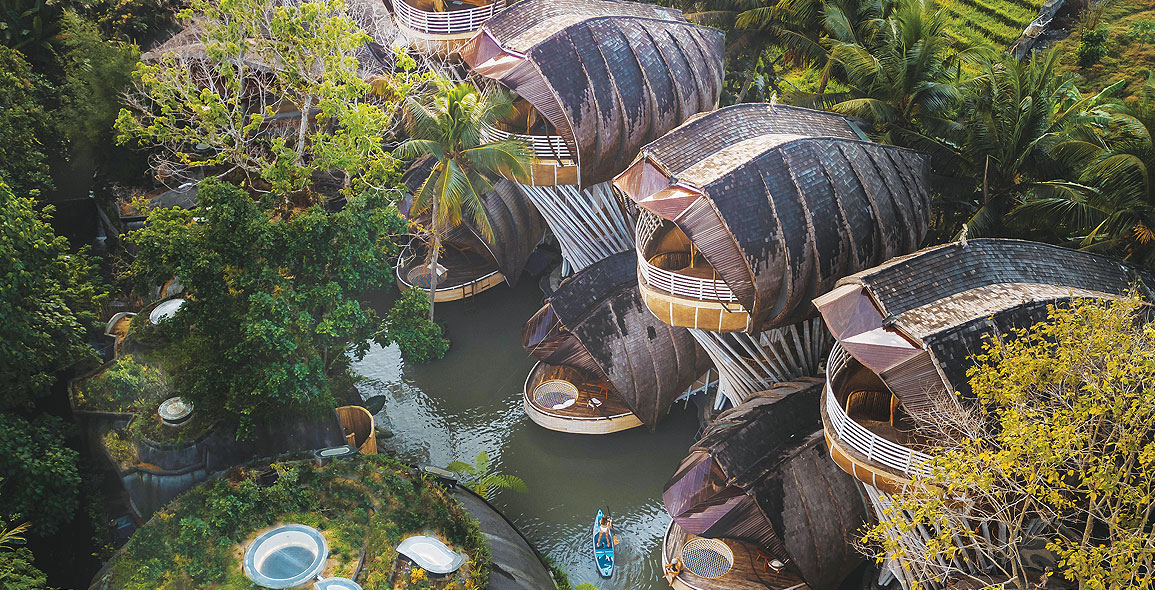
The advantages of the eco-luxury boom extend far beyond individual guest satisfaction, creating a ripple effect of positive impacts.
Advantages of the Eco-Luxury Model
A. Environmental Conservation and Regeneration:
By prioritizing sustainable practices, these resorts actively contribute to the protection of ecosystems, conservation of biodiversity, and reduction of pollution. Many go beyond conservation to actively engage in regenerative practices, helping to restore damaged environments. This directly contributes to the health of the planet and preserves the natural beauty that attracts guests in the first place, ensuring long-term appeal.
B. Empowered Local Communities:
Through fair employment, local sourcing, and community investment, eco-luxury resorts uplift local economies, reduce poverty, and help preserve cultural heritage. This creates a more equitable distribution of tourism benefits, fostering positive relationships between the resort and its neighbors. The creation of stable, well-paying jobs also helps to retain local talent and build a stronger, more resilient community structure.
C. Enhanced Brand Reputation and Guest Loyalty:
Operating sustainably builds a strong, positive brand image that resonates with conscious consumers. Guests who feel their values are aligned with a resort are more likely to return and recommend it to others, fostering strong loyalty and repeat business. This goodwill translates into invaluable word-of-mouth marketing and a competitive edge in the luxury travel market.
D. Operational Cost Savings:
Investments in energy efficiency, water recycling, and waste reduction often lead to significant long-term operational cost savings, demonstrating that sustainability can also be financially prudent. This “green” approach can result in a healthier bottom line, proving that environmental responsibility doesn’t have to come at the expense of profitability; in fact, it can enhance it.
E. Innovation and Best Practices:
The eco-luxury sector often acts as a laboratory for sustainable innovation within the broader hospitality industry. Their pioneering efforts in green technology and responsible management inspire and inform other businesses, raising the bar for the entire sector. They push boundaries, leading to new solutions that can be adopted by a wider range of properties, fostering industry-wide improvement.
The Future Landscape of Luxury Hospitality
The boom in eco-luxury resorts signals a fundamental shift in the definition of luxury itself. The future of high-end hospitality will increasingly be intertwined with responsible practices.
Emerging Trends in Eco-Luxury
A. Deeper Immersion and Transformative Experiences:
The trend will move beyond just “seeing” nature to actively participating in its preservation. Resorts will offer more immersive conservation experiences, citizen science programs, and opportunities for guests to contribute directly to ecological restoration. This shift caters to a desire for active engagement and a sense of personal contribution to conservation efforts.
B. Hyper-Local and Regenerative Tourism:
An even stronger emphasis on hyper-local sourcing, where everything from food to building materials comes from the immediate vicinity, will emerge. Regenerative tourism, which aims to leave a place better than it was found, will become the gold standard, focusing on active restoration and positive impact. This involves not just minimizing harm but actively improving the ecological and social well-being of the destination.
C. Advanced Smart Technology for Sustainability:
AI and IoT will be seamlessly integrated to optimize energy use, water management, and waste reduction in real-time. Smart sensors will monitor environmental conditions, allowing resorts to react proactively and minimize their footprint with greater precision. This technological integration will make sustainability efforts more efficient, measurable, and impactful, moving towards predictive sustainability management.
D. Carbon Neutrality and Net-Positive Operations:
Resorts will increasingly aim for carbon neutrality or even net-positive operations, generating more renewable energy than they consume and actively removing carbon from the atmosphere through reforestation or other initiatives. The ambition will shift from simply reducing emissions to actively contributing to global carbon reduction efforts, becoming a net benefit to the climate.
E. Holistic Well-being and Nature Connection:
The link between natural environments and human well-being will be further leveraged, with resorts offering more nature-based therapies, forest bathing experiences, and architectural designs that maximize exposure to natural elements for guest health. The focus will be on creating spaces that foster genuine rejuvenation and a profound connection with the natural world, recognizing nature as a key component of luxury.
Conclusion
The eco-luxury resorts boom is more than just a passing trend; it’s a profound redefinition of what true luxury means in the 21st century. It’s a recognition that the ultimate indulgence is a journey that nurtures both the soul and the planet. These pioneering properties demonstrate that impeccable service, exquisite design, and transformative experiences can not only coexist with environmental responsibility but are elevated by it.
As conscious consumerism continues to gain traction, and as the urgency of environmental protection becomes ever clearer, eco-luxury resorts will undoubtedly continue to flourish, setting the standard for responsible and inspiring travel worldwide. By choosing to stay at these havens of sustainability, travelers are not just booking a vacation; they are investing in a healthier planet, empowered communities, and a more hopeful future for tourism. It’s time to experience luxury that truly feels good, inside and out.

